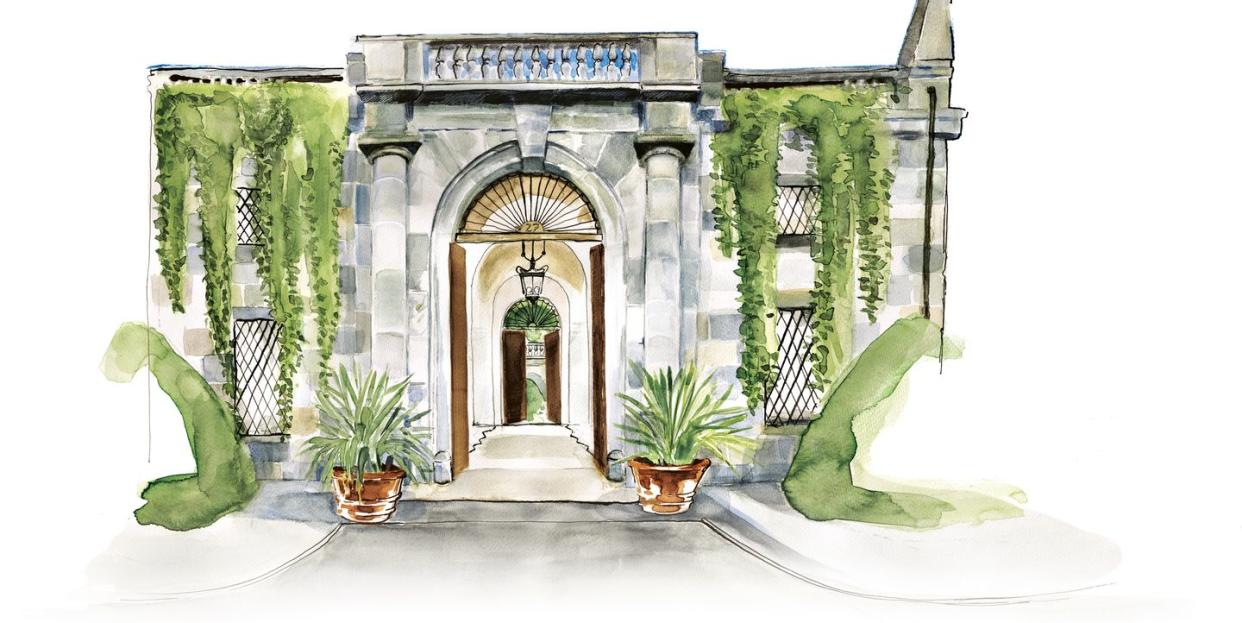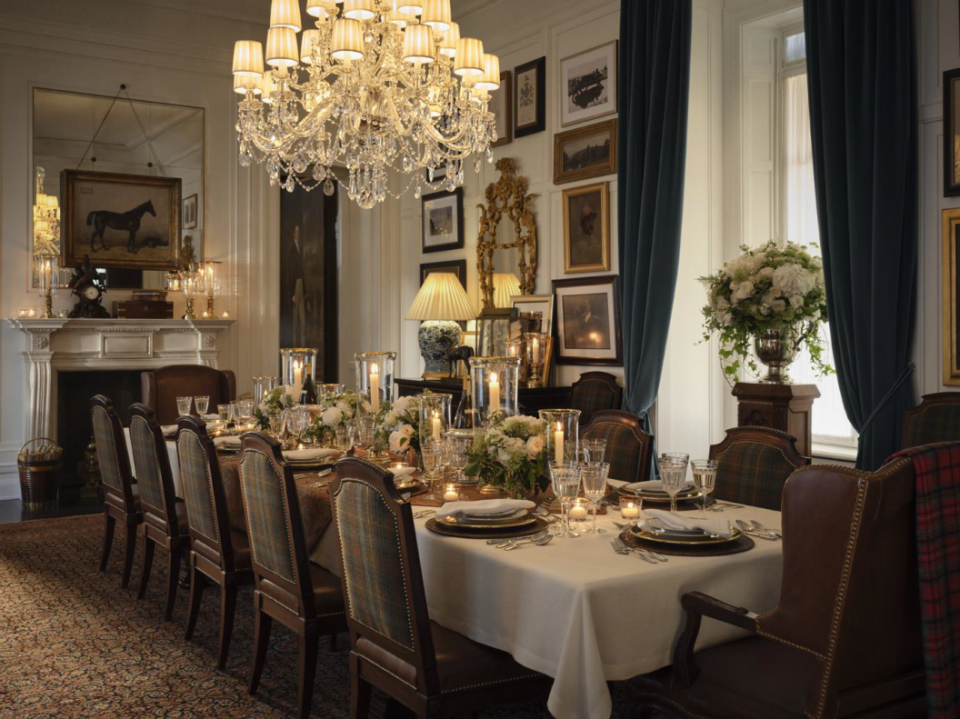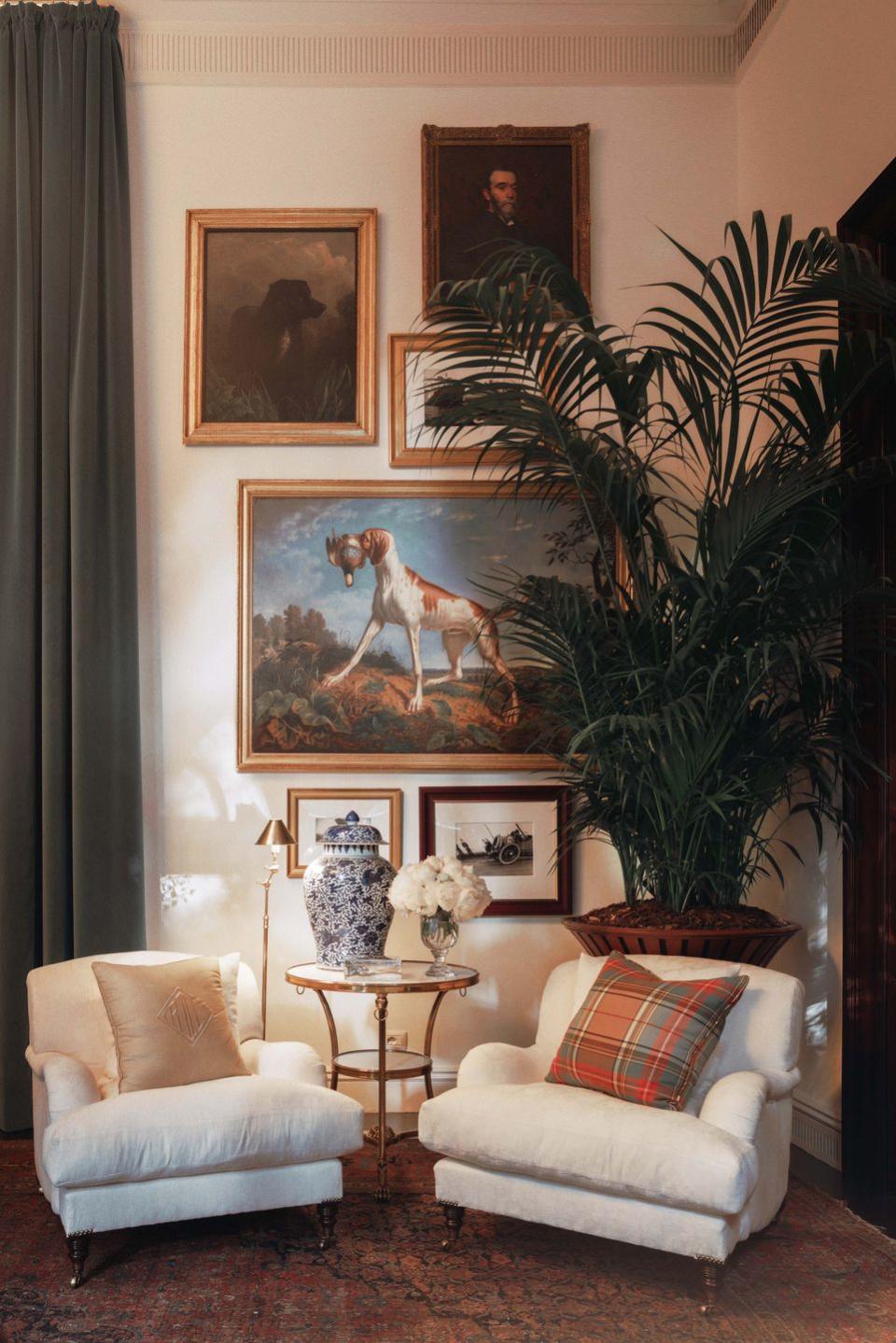The Fascinating History of Palazzo Ralph Lauren

- Oops!Something went wrong.Please try again later.
- Oops!Something went wrong.Please try again later.
"Hearst Magazines and Yahoo may earn commission or revenue on some items through the links below."
“This palazzo shows us classicism as something bold, but even more as something pure, almost abstract. It is at once modern and traditional. Its strength is how it looks backward and forward at the same time.”
The architecture critic Paul Goldberger is talking here about a building in Milan called Casa Campanini-Bonomi that is unusual in several ways, not least in that it is now best known for the American who acquired it in 1999: Ralph Lauren. The designer has a gift for making familiar but important architecture signify anew (as he did in 1986 with the Rhinelander mansion in New York, changing retail forever).
The 12,000-square-foot Rationalist masterpiece on Via S. Barnaba had until recently served as his Italian headquarters—a showroom more than creative incubator, a place for business rather than inspiration. But that changed for the duration of the annual Salone del Mobile design fair, when it was transformed into Ralph’s Milan, setting the stage, literally, for the unveiling of the label’s fall home collection.

“I fell in love with the palazzo as soon as I saw it,” Lauren tells T&C. “I was drawn to the modernity of the building. It had a timelessness and classical elegance that was the ideal setting to bring my collections to life. This was the first time we focused on home and hospitality in such a significant way. Ralph’s Milan was a very personal expression of my vision of living, a way to share my home in this special city.”
Until Lauren entered the scene, the palazzo was cared for by the family of Anna Bonomi, the illegitimate daughter of a Milanese real estate baron who owned 154 buildings. He died in 1940, leaving her as his only heir, and the palazzo was built the following year. It was a peculiar time for the construction of a grand house: The country was under the thumb of Benito Mussolini, and the continent was at the height of World War II.

The palazzo is an outlier for this reason, but also a star: Bonomi, who would die one of Italy’s richest women, in 2003, brought in the architect Mino Fiocchi to revive a building style from the 17th century and reimagine it for the 20th, at the very sunset of classicism.
Fiocchi, who died in 1983, was a very prolific, but today underrecognized, architect prominent in northern Italy from the 1920s to the 1960s. (Gio Ponti worked with him for a short period in the early ’20s.) Active in Milan, Lecco, and Cortina, he designed a number of mountain lodges in the Dolomites—buildings through which he pursued as a design objective the relationship between form, regional history, and natural context. Scion of an industrial dynasty that produced bullets, Fiocchi was familiar from birth with the world of privilege to which the Casa Campanini-Bonomi belongs.
The architecture here offers a snapshot of a singular moment. The years before the war put a stop to all construction, and the shape of the future had not yet been decisively revealed in the glass and steel forms of the Miesian International Style. The naked stonework and arches belong in a Giorgio de Chirico painting, and the crisp moldings and keystones are almost dreamlike in their simplicity. Lauren, of course, deals in dreams, and he knows they require an extraordinary backdrop.
“The palazzo is a magical setting for storytelling,” Lauren says. “And there are many more stories to share.”
With his label doubling down on its commitment to Milan—a new flagship store with a restaurant has opened—the plan is to use the palazzo for what Ralph Lauren does best: making a world. You can visit it virtually, but nothing beats the IRL experience. To make an appointment to visit the home atelier at Palazzo Ralph Lauren, call 011-39-02-3056-9082.
This story appears in the October 2022 issue of Town & Country. SUBSCRIBE NOW
You Might Also Like

